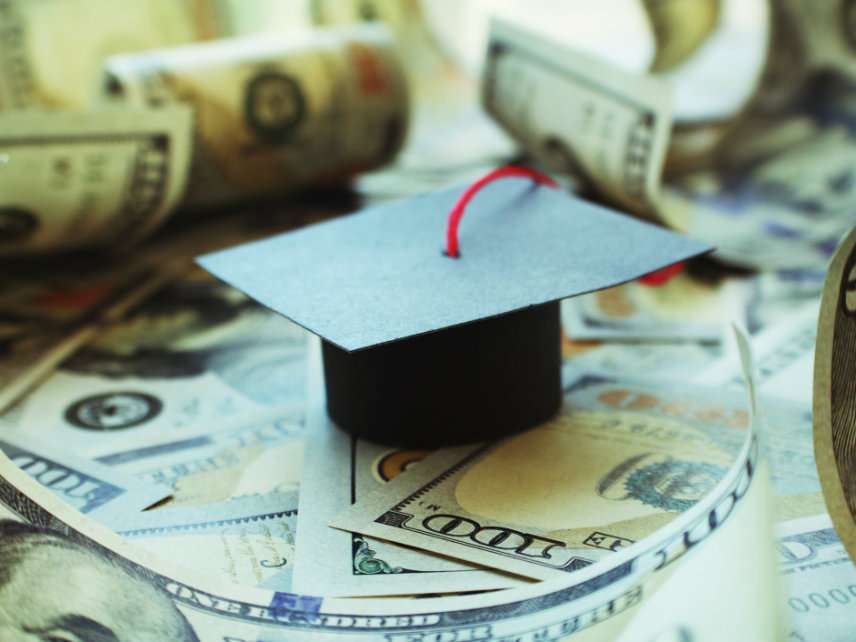Federal Student Loan Forgiveness Programs Are Useless. A Juvie Teacher's Story Shows Why.
"We consistently allow the government to develop…programs like this that sound really great on paper but have no practical benefit," Keith Bradford says.

Whether or not federal student loan forgiveness programs are a good idea in theory, they're clearly failing to work as advertised in practice. Consider the experience of Keith Bradford, a teacher in Washington state's Yakima School District.
In 2001, Bradford graduated from Central Washington University with a master's degree in history. At the time, he owed about $22,000 in student loans, which he quickly began paying off. He's stayed on the same plan since, though he has "doubled" his monthly repayments over the years.
In 2009 he looked into the Teacher Loan Forgiveness program, which allows teachers who've been at low-income schools for at least five years to have up to $17,500 of their student loan debts forgiven. More than 75 percent of the students in Yakima live in poverty, and Bradford has been teaching there for more than 13 years. He currently teaches social studies to incarcerated students at the juvenile detention center. He's precisely the sort of graduate the program is supposed to help. But he found he had started his education about a month too early to qualify.
This year Bradford applied for the Public Service Loan Forgiveness (PSLF) program, which George W. Bush signed into law in 2007. Under that program, certain public servants—including teachers—who have made 120 qualifying payments on their loans can have their slates wiped clean. The program only counts payments after October 1, 2007, meaning no one was eligible to apply for loan forgiveness until late last year. Bradford waited a few months, then applied. He was denied on the grounds that he hadn't made enough qualifying payments.
How could that be? According to a letter Bradford received from FedLoan Servicing, a company that processes federal student loan repayments for the Department of Education, the only loan repayment plans that qualify are income-driven. Bradford's plan is graduated, meaning it goes up over time but does not change based on his earnings. So again, a program that theoretically exists to help people like him doesn't actually do them any good at all.
Maybe he's just unlucky? Nope. Through the end of June, more than 28,000 borrowers have applied for loan forgiveness under the PSLF program. Of them, precisely 96 borrowers have had their applications approved, according to a Federal Student Aid report from last month. As CNBC reported in May, the program has numerous technical requirements, and it's extraordinary difficult for borrowers to meet them all.
Borrowers whose PSLF applications were denied can apply for the Temporary Expanded Public Service Loan Forgiveness program. But that program has "limited funding," the Federal Student Aid website notes, and once the money is gone, the "opportunity will end."
Bradford received a letter informing him he's eligible to apply. But he's not sure if it's even worth trying. "I know I'm going to be rejected again," he says. Plus, Bradford only has about $5,000 left to repay. At this point, he and his wife might just pay it off and "be done with it."
Nothing wrong with that. It's good to pay off your debts, and the Bradford family doesn't seem to need the help. But it raises the question: Why exactly do such programs exist in the first place? If the people that they're supposedly there for don't qualify for them, how much good are they doing? Are they worth the cost of administering them in the first place?
"I feel like it is such a typical government misrepresentation of a program," Bradford says. "We consistently allow the government to develop…programs like this that sound really great on paper but have no practical benefit to anybody that could actually use it."
This post originally stated that Bradford graduated with about $17,000 in student loans. Bradford later clarified that the number was closer to $22,000. The post has been updated to reflect that change.